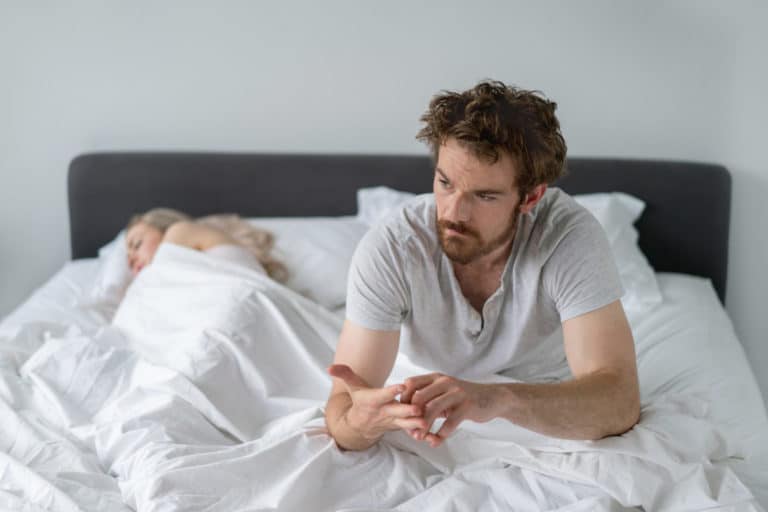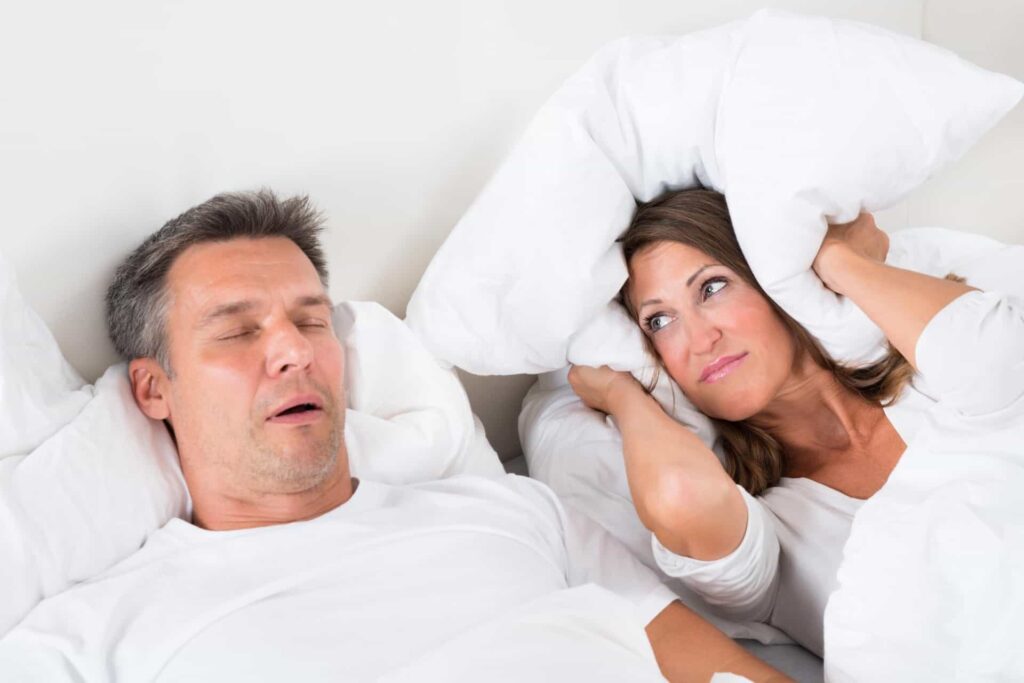If you’re one of the individuals seeking for therapy, you are aware of how much sleep apnea may affect your life. Fortunately, there are several top-notch therapeutic options. Treatment is quite effective in symptom alleviation and risk reduction for this common sleep disorder. There are further things you may take to ease your sleep apnea symptoms.
Although these recommendations are additional ways you could help with sleep apnea treatment, they are not alternative therapies for this illness. However, they could help you sleep better, which would improve your overall well-being.
Reduce the temperature to improve nocturnal sleep in general
The ideal sleeping temperature range is between 60- and 67-degrees Fahrenheit. Although everyone should follow this general guideline, researchers looked at how sleep apnea patients were impacted by ambient temperature and discovered surprising findings.
As you would have expected, those with sleep apnea said they slept better in rooms that were about 61 degrees Fahrenheit. They said that they felt more alert in the morning. Additionally, they slept more effectively, which refers to how much time was spent in bed actually sleeping asleep. When the room was warmer, they slept worse (about 75 degrees).
But what makes this study so fascinating is that untreated sleep apnea also became worse as the temperature dropped. Additionally, if you’re managing your sleep apnea, you’ll be able to sleep comfortably without being concerned that your symptoms may worsen. This shows that while aggravating the symptoms of sleep apnea, the cool room temperature encourages better sleep.

Relax with Lavender Aroma
Lavender was used in traditional folk medicine to treat hair loss, regulate appetite, and reduce stress. Its popularity is now resurgent because to its use in aromatherapy. Many people claim that the relaxing atmosphere and nice aroma make it easier for them to fall asleep. Even while some small-scale studies suggest lavender lessens anxiety, further research is necessary.
However, if you like the scent of lavender and think it promotes relaxation, we suggest dabbing a few drops of lavender essential oil on a towel. Next, slip the towel under your pillow or under your pillowcase.
Additionally, you may add lavender to hot water and inhale the steam to fill your bedroom with the scent of lavender using an oil diffuser.
Magnesium Can Improve Your Sleep
One study found that those with sleep apnea had lower amounts of magnesium in their bodies. These lowered magnesium levels were linked to higher blood levels of c-reactive protein. C-reactive proteins are produced by the liver to lower inflammatory levels in the body.
Sleep apnea sufferers experience considerable oxidative damage during night. Magnesium has potent anti-inflammatory properties that help reduce inflammation and may be advantageous for those with sleep apnea.
Avocados, seeds, almonds, bananas, and leafy greens like kale, spinach, and collard greens are all good sources of magnesium. Even dark chocolate has significant magnesium content. Magnesium supplements are also available, but before taking any supplement, especially if you have a health issue that hasn’t been identified or if you’re on any other medications, talk to your doctor.
Another option to raise your body’s magnesium levels is to take an Epsom salt bath before bed. A warm bath may also help your body get ready for sleep.
Reduce Throat Anxiety with Raw Honey
Raw honey has been used medicinally for thousands of years to relieve sore throats, reduce swelling, and lower the severity of coughing fits. Even though honey is not a pharmaceutical, due to its high concentration of phenolic compounds, which may serve as antioxidants, it has well-known anti-inflammatory properties. Its calming properties on the throat can help patients with sleep apnea.
Before retiring to bed, brew a cup of hot water or tea and add a teaspoon of raw honey. We advise against consuming processed honey since it often contains more sugar and fewer nutrients and antioxidants than raw, unpasteurized honey.
Before going to bed, using a humidifier
Humidifiers increase the humidity in the air. This is advantageous for those who have sleep apnea since dry air may irritate the body and the respiratory system. Humidifiers may also help to open up the airways, relieve congestion, and enhance breathing clarity. Get more usage out of your humidifier by adding some peppermint, lavender, or eucalyptus oil. If there is a calming aroma around, you could feel more at ease.
Even though it may seem obvious, always follow the manufacturer’s cleaning instructions. Your humidifier might turn into a mold and bacteria breeding ground if you don’t maintain it clean and sterile. Both of which either make it difficult for you to breathe peacefully at night or are good for your lungs.
The SAD should give way to the Mediterranean Diet (Standard American Diet).
Due to the numerous connections between obesity and sleep apnea, the American Academy of Sleep Medicine recognized exercise and weight loss as two beneficial lifestyle treatment options.
There is evidence that the Mediterranean diet not only promotes weight reduction but may also have additional benefits, despite the fact that calorie restriction is often the main emphasis of weight control.
According to one study, the Mediterranean diet, in addition to CPAP treatment and exercise, helped apnea patients attain higher Apnea-Hypopnea Index (AHI) scores, which indicate the severity of their disease.
Long-term studies have linked the Mediterranean diet to lower body weight and greater heart health. It is based on the customary dietary practices of the people living in the Mediterranean region. The diet is rich in anti-inflammatory antioxidants because it encourages eating plenty of fruits, vegetables, whole grains, nuts, seeds, and olive oil. While chicken, fish, and dairy products are often consumed, red meat and processed foods are seldom eaten.
There are easy ways to include the items recommended by the Mediterranean diet, starting with swapping out leafy greens for potatoes or French fries, red meat for fish or chicken, and standard cooking oil for olive oil. Snack on fresh fruit, nuts, or seeds rather than chips or crackers.
Yoga and throat exercises may reduce snoring
You may decide to buy a yoga mat or start singing in the shower after reading this.
The soft tissues of your mouth and throat relax during sleep, blocking your airway. This condition is known as sleep apnea. This impediment might be transient or permanent (but only partially). Oropharyngeal exercises, often known as throat exercises, have been suggested as a method to minimize the severity of sleep apnea symptoms.
There are many throat exercises that have been shown to be successful, including yelling and singing. In fact, a study found that frequent singing activities reduced the severity of snoring.
Yoga offers two separate benefits. Yoga exercises help to build up the body, and its breathing exercises help to build up the throat. Yoga encourages the growth of strength and stamina and provides the health benefits of exercise, including the potential for weight loss, which as we all know, helps to lessen the severity of sleep apnea. It sometimes doesn’t burn as many calories as an aerobic exercise program, however.
A new pacemaker-like device that maintains the airway open while you sleep may be helpful for those with obstructive sleep apnea who haven’t found relief. As an otolaryngologist at Duke, the first facility in North Carolina to implant the Inspire hypoglossal nerve stimulator, Matthew Ellison, MD, stated, “This therapy has enabled us to attain a whole new level of success” when previous methods have failed.

Why Sleep Apnea Needs a New Approach to Treatment
The most prevalent kind of sleep apnea is brought on by soft tissue at the back of the throat blocking the airway, which often leads in nighttime breathing pauses. Obstructive sleep apnea is the term for this (OSA).
One’s risk of stroke, heart attack, and atherosclerosis, or the hardening of the arteries, may all be increased by moderate to severe sleep apnea. Daytime drowsiness brought on by sleep apnea may impair focus and raise the chance of being involved in car accidents.
A continuous positive airway pressure (CPAP) machine is most often used to treat sleep apnea. It entails sleeping with a mask that covers your mouth or nose. Dr. Ellison claims that around 50% of persons who use CPAP do not continue using it over the long term, either because it is unpleasant or because it does not improve their symptoms. Non-CPAP alternatives for moderate sleep apnea include dietary adjustments (weight reduction and exercise) and custom mouthpieces that realign the lower jaw and prevent the tongue from obstructing the airway.
These approaches seldom ever work for people with moderate to severe sleep apnea. Prior to the development of the new Inspire hypoglossal nerve stimulator system (from Inspire Medical Systems), sleep apnea surgery options involved realigning or reshaping tissue in the palate or throat; however, the benefits of these procedures could wear off over time as the tissues started to relax or soften.
The remaining individuals with untreated sleep apnea, according to Dr. Ellison, “may benefit from hypoglossal nerve stimulation.”
By stimulating the hypoglossal nerve, the pacemaker-like device maintains the airways open and enables those who suffer from sleep apnea to enjoy a decent night’s rest. Clinical investigations have shown its efficacy, showing that it greatly improves sleep apnea and lessens symptoms like snoring and daytime tiredness.
What Is the Process of Hypoglossal Nerve Stimulation?
Three components for hypoglossal nerve stimulation, also known as upper-airway stimulation, are implanted under the skin of your neck and chest via two incisions.
Your breathing patterns are picked up by a sensor located near your lungs. A stimulator placed in the neck region sends gentle impulses to the nerves that control your tongue, shortening the muscles in your tongue and throat and sliding your tongue and palate forward, which maintains an open airway.
The stimulation is synchronized with your breathing by a tiny pacemaker-like device that is positioned just below your collarbone. It turns on immediately before you inhale and turns off in between breaths to enable your tongue to relax.
Additionally, there is a little remote control that you may use to activate the stimulator just before bed. The system may be configured to operate for whatever many hours you wish to sleep. You have a built-in delay that allows you to doze off before stimulation starts, and you can halt it if you need to use the restroom.
The gadget may be modified if the stimulation is uncomfortable. People like having control over it, according to Dr. Ellison. Some people like to wake up with it turned off, while others prefer to have it on.
Who is a Candidate for Stimulation of the Hypoglossal Nerve?
For adults, hypoglossal nerve stimulation is an excellent alternative if they:
Have attempted other treatments, including CPAP, without success during the previous two years.
Possess a body mass index (BMI) under 32 (although Medicare sets the threshold at 35)
Possess moderate to severe obstructive sleep apnea, as discovered by a sleep test completed within the last two years.
These broad guidelines may not apply to everyone, and hypoglossal nerve stimulation has significant limitations. Candidates for this new sleep apnea gadget will go through a sedated endoscopic examination in which a flexible camera is inserted into the nose and guided to the throat to see the way the throat closes while the patient is sleeping.
Your ability to profit from hypoglossal nerve stimulation depends on the findings. The actual surgery is performed as an outpatient procedure, and the majority of patients recover without the need for narcotic painkillers. It is possible to activate the gadget after four weeks.
